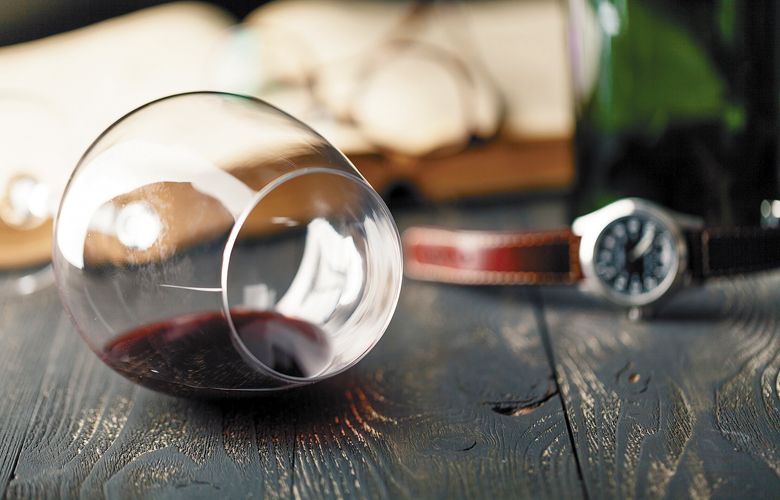Aging Pinot
Make room in your cellar for the Oregon wine icon
By Barbara Barrielle
Americans tend to drink their wines young. Maybe a Cabernet Sauvignon, Merlot or proprietary red blend is set aside for aging, but for wines like Pinot Noir and Chardonnay, not as much. The latter, at the most, gets five years in the cellar; and the former, maybe a couple more.
Yet, during a recent series of tastings hosted for a group of wine writers and led by educator Fred Swan, the consensus among those in the know — growers and winemakers — reveals that Willamette Valley Pinot Noir ages well, so well that many vintages thought to be forgettable are now quite rewarding, after 10 years, or so, in a well-cellared bottle.
Harry Peterson-Nedry of RR Winery and Ridgecrest Vineyards says, “The climate is as close to a bona fide cool climate as we can get in this era of climate change, which means gentle ripening with retained acidity and ripe — but not overripe — fruit, meaning balance. And that is key to aging. Older vines help also, having deep root systems that search for water and trace elements in the sedimentary and volcanic soils.”
“Willamette Valley Pinot Noir does age extremely well, as a general statement,” adds David Adelsheim of Adelsheim Vineyard. “For our own wines, almost every vintage, whether warm or cool, seems to easily age 15 to 20 years. Some vineyards and vintages age much longer — the oldest wines we have are 41 years old. Cooler vintages, particularly those that are wet — 2013, 2011, 2010, 2007, etc. — are always much better at 10 years than at two or three.”
Peterson-Nedry concurs, “All are interesting, but cooler vintages and spherically balanced, classic vintages are showing well — 1983, 1985, 1988, 1993, 1994, 1998, 1999, 2002, 2005, 2006, 2008, 2010, 2011 and 2012. I don’t yet consider newer vintages old enough to evaluate.”
Adam Campbell of Elk Cove Vineyards says of wines his father made in the 1970s, “They are still tasting lovely, and we feel so fortunate to be able to break out a little piece of history every now and then.”
He continues, “Almost any well-made Willamette Valley reserve or single-vineyard Pinot Noir should easily age 15 to 20 years, but my favorite vintages for aging tend to be cooler weather years that have great freshness and vibrancy to the fruit. Recent top aging vintages are 1999, 2001 and 2011.”
Our wine writers’ tasting group was thrilled with surprises like the decried 2011s that now taste dynamic and elegant. We also marveled at the structure of Pinot Noirs with more than 10 years of age, and grateful forward-thinking wineries kept some in their libraries.
“The surprises are especially rewarding, especially when they fly in the face of ‘weather report vintage assessments’ by media or winemakers,” says Peterson-Nedry. “Examples include cool and damp years, such as 1993, 1995, 1996, 1997, 2010 and 2011; and a few hot years that are surprisingly well preserved, such as 1992, 2003, 2006 and eventually — likely — some of the recent hot years.”
Rudy Marchesi of Montinore Estate points out that Willamette Valley Pinots from the early 1990s are still drinking well. “This creates a situation where we get extended phenolic development and we can get the kind of tannin structure through this long hang-time that makes for wines with long aging potential.”
A proponent of vineyard health and vitality, Marchesi deliberately works on enhancing the microbes and nutrients in the soils, encouraging a vibrant cycle. A majority of his vines are own-rooted, and because of his Biodynamic practices, they can tolerate extreme weather, which also helps in aging.
“The key to aging potential is to have high concentration of fruit, great acidity and strong but ripe tannins,” says Campbell. “I think the best things I can do to increase aging potential is to prioritize older vineyards — 20-plus years — that have all those elements.”
When it comes to a wine’s potential for aging, Peterson-Nedry says the following are key considerations: cool-climate site selection; sustainable viticulture with dry farming (if possible); careful crop-load management; harvest timing decisions (when to pick); close acid management in the winery with adjustments where necessary; fermentation temperatures; gentle filtration such as cross-flow; and sulfur dioxide levels in the final bottling blend to adequately scavenge oxygen and prevent Brett or premature oxidation.
In regard to bottling, closures are also important. Peterson-Nedry says, “Years ago, we made a decision to use Stelvin (screwcaps) to eliminate oxygen ingress and leave enough SO2 long-term to prevent Brett.” He has written much on the Stelvin closure for Pinot Noir and has ongoing research supporting his theories.
Of course, the Willamette Valley is not unique in producing Pinot Noir with aging potential. “We have an excellent combination of cool climate, very good soils, “Goldilocks” vintage reliability and a history with the grape. Other New World regions do a good job, too” says Peterson-Nedry.
Adelsheim adds, “I have to assume that most Willamette Valley Pinot Noirs age better than those from warmer climates, but I have not had this conversation with vintners in California or New Zealand. “Sometimes — and in some vintages — Willamette Valley Pinot Noirs can age more gracefully than Burgundies with Villages or even Premier Cru appellations.”
As for aging non-Pinots, Adelsheim says, “We have much less experience with our white wines and other varieties. [And yet], some of our Chardonnays are amazingly young at 10 and 15 years.”
Aging Oregon Chardonnay: the perfect topic for an upcoming article. Stay tuned.











